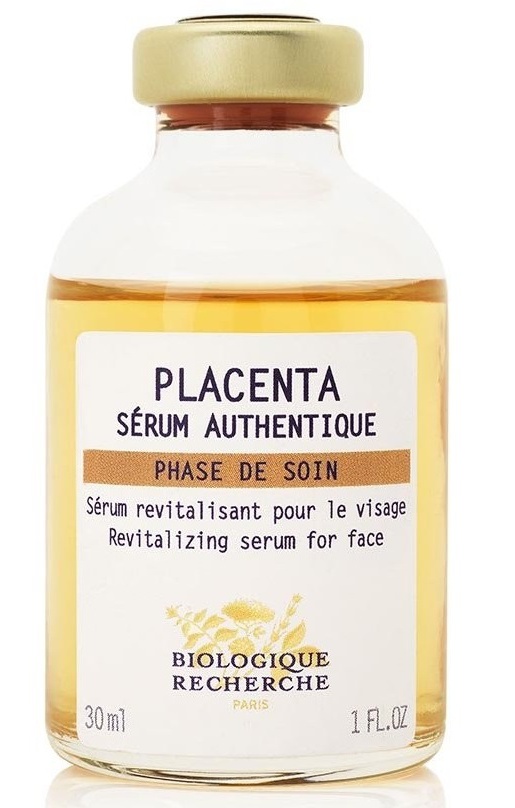
Serum Placenta
Highlights
Skim through
| Ingredient name | what-it-does | irr., com. | ID-Rating |
|---|---|---|---|
| Water (Aqua) | solvent | ||
| Hydrolyzed Placental Protein | moisturizer/humectant | goodie | |
| Phenoxyethanol | preservative | ||
| Ethylhexylglycerin | preservative |
Biologique Recherche Serum PlacentaIngredients explained
Good old water, aka H2O. The most common skincare ingredient of all. You can usually find it right in the very first spot of the ingredient list, meaning it’s the biggest thing out of all the stuff that makes up the product.
It’s mainly a solvent for ingredients that do not like to dissolve in oils but rather in water.
Once inside the skin, it hydrates, but not from the outside - putting pure water on the skin (hello long baths!) is drying.
One more thing: the water used in cosmetics is purified and deionized (it means that almost all of the mineral ions inside it is removed). Like this, the products can stay more stable over time.
A chemically chopped up version of protein coming from bovine placenta (yes, it is an animal-derived ingredient). Proteins are long amino acid chains, so when you chop them up you get peptides (short amino-acid chains) and amino acids, nice molecules that are known as the "building blocks of life".
In general, amino acids, peptides, and proteins are moisturizing, nourishing and regenerating ingredients when you smear them on your face, so is probably Hydrolyzed Placental Protein. According to manufacturer's information, it also works as a film forming, protecting and restructuring agent. Due to its high amino acid content, it improves surface hydration and elasticity and due to its larger peptide and protein molecules, it forms a nice film on the skin that reduces trans-epidermal-water-loss (i.e. hinders water evaporating out of the top layers of the skin). These effects help to maintain the water content of the skin cells and result in a healthy skin & nice complexion.
It’s pretty much the current IT-preservative. It’s safe and gentle, but even more importantly, it’s not a feared-by-everyone-mostly-without-scientific-reason paraben.
It’s not something new: it was introduced around 1950 and today it can be used up to 1% worldwide. It can be found in nature - in green tea - but the version used in cosmetics is synthetic.
Other than having a good safety profile and being quite gentle to the skin it has some other advantages too. It can be used in many types of formulations as it has great thermal stability (can be heated up to 85°C) and works on a wide range of pH levels (ph 3-10).
It’s often used together with ethylhexylglycerin as it nicely improves the preservative activity of phenoxyethanol.
If you have spotted ethylhexylglycerin on the ingredient list, most probably you will see there also the current IT-preservative, phenoxyethanol. They are good friends because ethylhexylglycerin can boost the effectiveness of phenoxyethanol (and other preservatives) and as an added bonus it feels nice on the skin too.
Also, it's an effective deodorant and a medium spreading emollient.
You may also want to take a look at...
| what‑it‑does | solvent |
| what‑it‑does | moisturizer/humectant |
| what‑it‑does | preservative |
| what‑it‑does | preservative |





